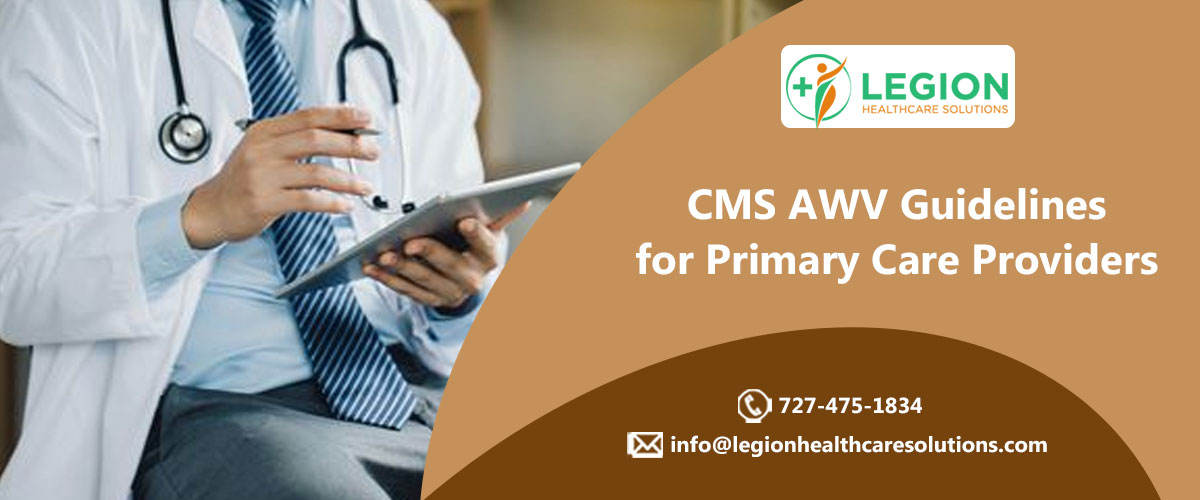
CMS AWV Guidelines for Primary Care Providers
The Annual Wellness Visit (AWV) is a Medicare benefit that provides an opportunity for primary care providers to work with patients to develop a personalized prevention plan and help prevent disease. The Centers for Medicare and Medicaid Services (CMS) publishes guidelines for the AWV on an annual basis, and it’s important for primary care providers to stay up to date on the latest guidelines to ensure that they are properly documenting and billing for the AWV.Here are some key components of the CMS AWV guidelines for primary care providers:
Overview of the AWV
The AWV is a once-per-year visit that is intended to promote health and wellness and help prevent disease. The visit includes a review of the patient’s medical and family history, a list of current providers and medications, and a review of any risk factors for potential health problems. The AWV also includes a physical exam, including measurements of height, weight, blood pressure, and other vitals, and an assessment of cognitive function. During the visit, the healthcare provider will develop or update a personalized prevention plan that takes into account the patient’s health status, risk factors, and health goals.
Eligibility for the AWV
Patients who are eligible for the AWV include those who have been enrolled in Medicare Part B for more than 12 months and who have not received an initial preventive physical examination (IPPE) or “Welcome to Medicare” preventive visit within the past 12 months. The AWV is also available to patients who have not received an AWV in the past 12 months.
Elements of the AWV
The AWV includes a number of key elements that are important to document in order to ensure that the visit is properly billed and to provide high-quality care to the patient. These elements include:
- Medical and family history: The healthcare provider should review the patient’s medical and family history, including any chronic conditions or other health problems, as well as any medications the patient is taking.
- List of current providers and medications: The healthcare provider should review the patient’s current list of healthcare providers and medications, including any over-the-counter medications, supplements, or vitamins.
- Review of risk factors: The healthcare provider should review any risk factors that the patient may have for potential health problems, such as smoking, alcohol use, or a family history of certain diseases.
- Physical exam: The AWV includes a physical exam, which should include measurements of height, weight, blood pressure, and other vitals, as well as an assessment of cognitive function.
- Personalized prevention plan: The healthcare provider should work with the patient to develop or update a personalized prevention plan that takes into account the patient’s health status, risk factors, and health goals. This plan may include recommendations for screenings, vaccinations, or other preventive measures.
Additional screenings
In addition to the standard components of the AWV, the healthcare provider may also conduct additional screenings or assessments, depending on the patient’s age, health status, and other factors. Some common additional screenings that may be conducted during the AWV include:
- Depression screening: The healthcare provider may screen for depression using a standardized tool, such as the Patient Health Questionnaire-9 (PHQ-9).
- Alcohol misuse screening: The healthcare provider may screen for alcohol misuse using a standardized tool, such as the Alcohol Use Disorders Identification Test (AUDIT).
- Obesity screening: The healthcare provider may screen for obesity using body mass index (BMI) measurements or other tools.
Documentation and billing
Proper documentation and billing are critical to ensure that the AWV is properly billed and that the patient receives appropriate care. To ensure proper documentation and billing, the healthcare provider should document all of the elements of the AWV in the patient’s medical record, including the patient’s medical and family history, list of current providers and medications, review of risk factors, physical exam, and personalized prevention plan.
When billing for the AWV, the healthcare provider should use the appropriate Current Procedural Terminology (CPT) code, which is G0438 for the initial AWV and G0439 for subsequent AWVs. It’s important to note that the AWV is a separate benefit from a routine physical exam or other evaluation and management (E/M) services, and should not be billed in conjunction with those services.
In conclusion, the CMS AWV guidelines provide primary care providers with a valuable opportunity to promote health and wellness and prevent disease in their Medicare patients. By following these guidelines and properly documenting and billing for the AWV, primary care providers can help ensure that their patients receive the highest quality care possible.
Legion Healthcare Solutions is a leading medical billing company providing complete billing and coding services. We can assist you in accurate billing and coding for your primary care practice. We ensure timely and accurate claim submissions to various payers including Medicare, Medicaid, and major commercial payers in your area. To know more about our primary care billing services, contact us at 727-475-1834 or email us at info@legionhealthcaresolutions.com
